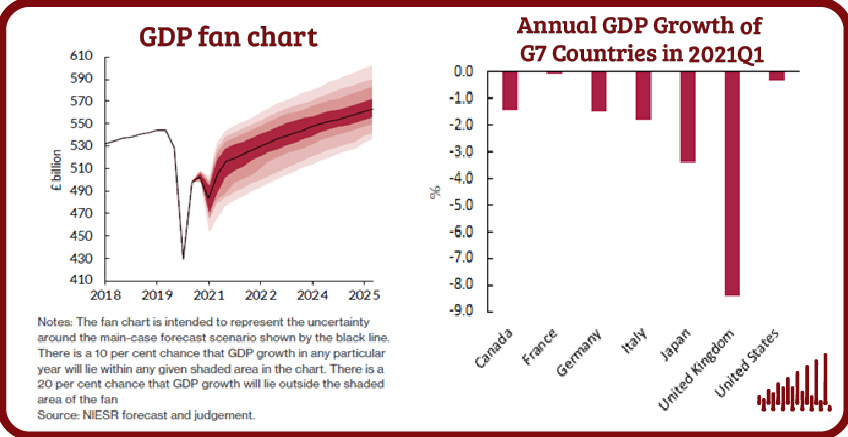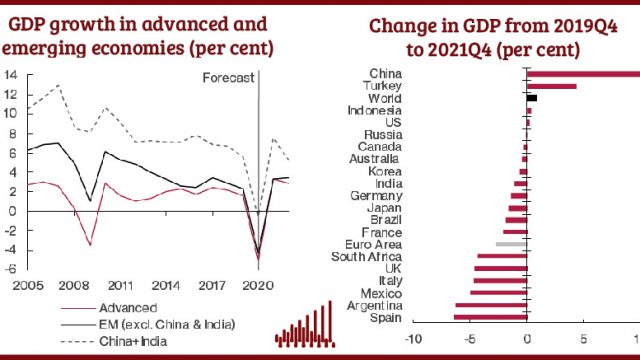Brexit Britain in Covid Recovery Ward
The resurgence of Covid-19 has led to a downward revision in forecasts of UK economic growth in 2021 from 5.9% to 3.4%, following a contraction of 9.9% in 2020. Early indications are that the lockdown in the first quarter is having a larger impact on activity than in November, but a smaller impact than the Spring 2020 lockdown.
 Pub. Date
Pub. Date
08 February, 2021
 Pub. Type
Pub. Type

Key Points
- The Coronavirus Job Retention Scheme (CJRS) and the Self-employed Income Support Scheme (SEISS) have protected millions of jobs, costing the government an estimated £100 billion or 4.8 per cent of GDP, for the 20-21 fiscal year. In NIESR’s main-case forecast scenario, unemployment is expected to rise significantly following the end of these schemes in April, reaching 7½ per cent or 2½ million people by the end of the year.
- To prevent a rise in unemployment of the magnitude of the forecast, and to limit the economic and social ‘scarring’ from the public health crisis, the Chancellor should soon announce policies to support the labour market beyond April. The pace and path of the recovery will depend on state-contingent and targeted policy interventions.
- Public sector net debt, which increased to 99.4 per cent of GDP as of December 2020, is projected to peak at 111 per cent in 2023. The Budget comes at a crucial time in the fight against Covid-19. If Covid-19 support is withdrawn prematurely, or if consolidation is prematurely applied in response to the increase in public debt, the economic recovery will be delayed and the long-term economic impact of the pandemic exacerbated.
- The gaps opened by the Trade and Cooperation Agreement with the EU require implementing mitigation policies and structural reforms over several years as well as negotiating trade agreements with key trading blocs in the rest of the world.
- There are major risks to the downside associated with the roll-out and effectiveness of vaccines, the emergence of new Covid-19 strains and their effect on the path of the virus, which might imply the continuation of lockdown measures for a longer period, suppressing domestic demand.
- A slower than expected global recovery due to Covid-19 is also a major downside risk for the UK economy through lower trade.
- Successful mass vaccination of the UK population followed by a permanent easing of social distancing rules presents an upside risk to NIESR’s forecast in 2021 and beyond.





